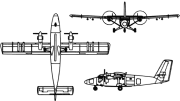helno posted:
I'd hate to imagine the impingement damage to the turbine blading. I'd have thought it would have been the other way around with high quality high pressure steam that gets reused as low pressure wet steam. I've only heard wet steam go down our headers once when one of the moisture traps failed and it sounded like the rumble of death.
|
|
|
|
|

|
| # ? May 17, 2024 22:02 |
|
I didn't even know "dry steam" was a thing 
|
|
|
|
Captain Foo posted:I didn't even know "dry steam" was a thing It's more jargon than a "scientific" term. "Wet" and "dry" steam are referring to the relative amount of condensate in the line.
|
|
|
|
Captain Foo posted:I didn't even know "dry steam" was a thing Dry steam is superheated steam, i.e. water above the boiling point. Water at its saturation point is actually a mixture of liquid water and steam, which is called wet steam, and referred to using a parameter Χ, "quality", which is the mass fraction of the water that is in the gaseous state.
|
|
|
|
Captain Foo posted:I didn't even know "dry steam" was a thing Also hot steam and cold steam. Also the temperatures of the water at various points, and whether it's expected to be boiling there or not. You can have 600C water in one point, and everything's OK, and 25C water somewhere else that really should be boiling there.
|
|
|
helno posted:GE EHC mark II for large steam turbines. Hope you really like op-amp's.  I'm sure they've done the maths and all, but holy poo poo. Captain Foo posted:I didn't even know "dry steam" was a thing Not only is it a thing, but it's an invisible thing that will kill you dead very loving quickly. Get a pinhole leak in a pipe, and it'll basically do this to anything that passes through it: https://www.youtube.com/watch?v=iXgsCPFhSgc Steam scares the living poo poo out of me for good reason.
|
|
|
|
|
Two Finger posted:
And this is what happens when you get cold water accidentally dripping on super heated steam pipes causing steam hammer: https://www.youtube.com/watch?v=SImhkapRuIs There was a tow truck right over when it erupted, you don't want to know what happened. Steam is fantastic in its uses, but when it goes wrong..
|
|
|
|
M_Gargantua posted:I'd hate to imagine the impingement damage to the turbine blading. I'd have thought it would have been the other way around with high quality high pressure steam that gets reused as low pressure wet steam. I've only heard wet steam go down our headers once when one of the moisture traps failed and it sounded like the rumble of death. The steam is 4.4 MPa but only around 250 degree celsius because it is being boiled by 305 degree water at 9.8 Mpa. I don't know the math or have the exact numbers but I have heard that it is about 0.1% moisture when it gets to the valve chest. At full power we boil about 1200 kg per second per unit (we have 8 units). The older LP turbines look like a sandblaster have been taken to the last few stages due to impingement damage. We only turn at 1800 rpm so it is not as bad as the plants that run 3600.
|
|
|
|
Expanding saturated steam from a quality of 1 down to about 0.9 (or in some cases down to 0.85 or so) is actually a pretty common cycle, or at least it was. Superheat is a newer addition to the cycle, because it's a bitch and a half to add heat to dry steam (heat transfer coefficient similar to that of air).
|
|
|
TyroneGoldstein posted:And this is what happens when you get cold water accidentally dripping on super heated steam pipes causing steam hammer: As I've stated before, steam scares the living hell out of me for good reason. I can't remember the exact figure, but I think water will expand up to like 1400 times its original volume when it becomes steam.
|
|
|
|
|
FrozenVent posted:Wait, H2 as in hydrogen? I worked at a plant that had a significant hydrogen leak, and the main concern was running out.
|
|
|
|
This is an example of a boiler explosion. https://www.youtube.com/watch?v=fCej2OQSKnY There's write up with better pictures here. Another boiler explosion here. https://www.youtube.com/watch?v=PsSVfAg1kRg
|
|
|
|
I live in the UK and in our fuse box the first set of fuses says 415V 80A/100A, should I be frightened of arc flashes from them when they fail? What's the difference between the neutral and ground pins in a plug? I was told by a school physics teacher (some years ago) that a shaver socket is safer than a regular power outlet because if I came into contact with a wire I wouldn't be completing the circuit and so wouldn't receive a shock, is that true?
|
|
|
|
Crankit posted:I live in the UK and in our fuse box the first set of fuses says 415V 80A/100A, should I be frightened of arc flashes from them when they fail? What's the difference between the neutral and ground pins in a plug? I was told by a school physics teacher (some years ago) that a shaver socket is safer than a regular power outlet because if I came into contact with a wire I wouldn't be completing the circuit and so wouldn't receive a shock, is that true? Fuses are designed to keep arcs in, so no problem there. The neutral pin goes back to the source of your power, typically the transformer on the pole. The ground pin goes to the earth at your panel. Usually there's a bond between the two there. The fundamental difference is that the neutral pin is designed to carry current under normal circumstances (it's the second wire of a complete circuit) where the ground pin should only have current/voltage on it in a fault condition. Going from memory here, but shaver sockets in the UK are usually powered by isolation transformers and are therefore ungrounded. So accidentally touching one wire doesn't give a complete circuit to anything, as the transformer isn't connected to ground. Touching both wires will still shock you, but maybe not kill you because the transformer is power limited (I think). Other parts of the world use a GFCI (ground fault circuit interruptor). If you touch one wire and complete a circuit to ground, the outlet senses the ground fault current and shuts the power off.
|
|
|
|
babyeatingpsychopath posted:Fuses are designed to keep arcs in, so no problem there. Pretty much this. But you would absolutely not want to do something like pull them with the power (I think you call that "mains") turned on. Is there a switch, and underneath that three fuses? Both circuit breakers and fuses have a maximum current rating in kiloamps. So the fuse may have a label like this: 600V 50A 100kAIC The 100kAIC indicates it can interrupt up to 100,000 amps. For fuses it isn't difficult to get fuses rated at 100,000 or even 200,000 amps of fault. Circuit breakers are much more expensive. We have some breakers at work (HFDs and HKDs from Eaton, fairly common industrial three-pole breakers) that are rated at 65kAIC at 480V, and they aren't cheap. I think the idea for sticking with higher capacities is so that if we change or salvage equipment later in its life, there's a better chance we can reuse the equipment rather than saying "Crap, this is rated too small for other places in the plant. Chuck it." The fault level is limited mainly by the impedance of the source (the transformer feeding the system) and the impedance of the cable from the transformer to where the fault is) as well as if there are current-limiting devices in between. If you have a fault that exceeds the rated capacity of the interrupting device, it may violently fail to interrupt the fault. I've seen pictures of circuit breakers exploding like a bomb when their capacity is interrupted. Medium and large circuit breakers (thousands of volts and thousands of amps and up) have their fault rating in MVA. A breaker may have a 500MVA fault rating (500 million volt-amps). Three-Phase fucked around with this message at 00:04 on May 8, 2013 |
|
|
|
babyeatingpsychopath posted:Fuses are designed to keep arcs in, so no problem there. And hopefully they are not exposed. I mean, they have some kind of cover them, right?
|
|
|
|
I think I've found a video showing the most spectacularly dangerous way to test a high-resistance grounded system. If there was an undetected fault on another phase to ground, it would have probably blown up in this guy's face. Even more dangerous he could have accidentally gotten that cable between the phases leading to a potentially serious arc flash. What I would have done if I had to test it this way: get a current-limiting fuse and fuseblock rated higher than the maximum short circuit current, and a contactor. Shutdown the system, LO/TO and cordon off the testing area, and rig the device to fault to ground via the contactor and the fuse. Then I could power the contactor from a safe distance away, and if for whatever reason there was a second undetected phase to ground fault, the fuse would open. (And even if the fuse failed the area would be cordoned and everyone would be a safe distance away. In my opinion this is an absolutely Looney-Tunes test. A lot of people in the comments section seem to agree with me. It looks like he's wearing garden/workshop gloves too. We really need a psyduck/science combined GIF. Three-Phase fucked around with this message at 20:31 on May 18, 2013 |
|
|
|
I once explained how arc flash works near generators to an ex- generator commissioning engineer (in Asia, so no recognition of the hazard in the first place). Basically everything this guy this did in his normal day to day work would be completely off limits if he had to follow arc flash policy of any kind. His PPE on hot days: shorts. The general approach to electrical safety in Asia is pretty relaxed. In Taiwan there's no regulation whatsoever, but I was told it wasn't a problem because accidents only happen when you make mistakes.
|
|
|
|
Three-Phase posted:I think I've found a video showing the most spectacularly dangerous way to test a high-resistance grounded system. The entirety of that video my face was a combination of  and and
|
|
|
|
Hello! If it's cool with the OP I can answer your questions about marine electricity. I'm not familiar with marine HV, but we have 690V 60Hz onboard. We also have 5 gensets and 2 main engines for a total of approx. 18MW of electrical power. All of this is controlled with our Integrated Automation System, which automatically(or manually if necessary) controls frequency, number of generators and load sharing. Heres a picture of our main switchboard: Engine control room:
|
|
|
|
Three-Phase posted:I think I've found a video showing the most spectacularly dangerous way to test a high-resistance grounded system.
|
|
|
|
afen posted:Hello! If it's cool with the OP I can answer your questions about marine electricity. I'm not familiar with marine HV, but we have 690V 60Hz onboard. We also have 5 gensets and 2 main engines for a total of approx. 18MW of electrical power. Is that 690/400 or 1200/690? I also heard somewhere, but wasn't sure about this, that some marine systems utilized 69/120V instead of 120/208V, so if you plugged in a 120V load, it was really line-to-line. The idea is that the line to ground voltage is much lower and a little safer. (Lots of potential transformers are wired 120V line to line, but I'm talking about for power.) GWBBQ posted:Just to confirm, is he holding a ground wire in his hand and shorting a hot terminal to ground? I don't want to jump to conclusions since that seems monumentally stupid, but the reactions here seen to confirm that what he's doing is, in fact, monumentally stupid. It sure looks like that. It's a high-resistance ground, so there's no violent explosion that kills/seriously burns him. Problems I can see: 1. If there was a fault in the high-resistance ground or an undetected fault on another phase, that would have blown up 2. He's wearing work gloves, not electrically rated gloves 3. No apparent PPE in a live cabinet 4. Risk of shorting phases together if he slipped 5. He didn't even turn away when tapping the wire to the phase I'm not trying to insult the guy, I just don't want to see someone get killed in a fireball or worse surviving with debilitating injuries. Even if he was wearing Level 3 or Level 4 PPE, I'd still think this procedure was absolutely nuts. I have to show the guys at work this; their jaws will drop. If we ever attempted anything close to this we'd be seriously risking termination. Three-Phase fucked around with this message at 17:40 on May 19, 2013 |
|
|
|
But:quote:See how the arc flash is minimum, as the ground fault current is just 5 A Basically, it's cool bro, don't worry about it.
|
|
|
|
Three-Phase posted:Is that 690/400 or 1200/690? The US Navy's ships use a 69/120 ungrounded Y power system. Each circuit is 120V and has a fuse in each leg. A single ground fault opens the leg, turns on a light in the fuse panel, and the system faulted keeps running at 70V. It's very fail-safe and battle hardened, and takes multiple faults to totally fail. The generators are also rated down to 18% power factor. 1800MW at 95% pf, 600MW at 18%. Impressive movers.
|
|
|
|
I was also reading about military systems with "battle short" circuit breakers. I am not sure if that overrides just 51 (inverse time overcurrent) or 51 and 50 (instantaneous overcurrent) protection. Basically if you're in the middle of a battle, you don't the circuit breaker controlling the motor that does something like rotate your turret tripping on an overload - electrical system damage is acceptable to save the ship. Sort of like a fire pump system.
|
|
|
|
Three-Phase posted:Is that 690/400 or 1200/690? The generators are 690V-60Hz, and we have transformers for 440V and 230V. Never heard of those systems before, but I've only been on Norwegian ships.
|
|
|
|
Three-Phase posted:I was also reading about military systems with "battle short" circuit breakers. I am not sure if that overrides just 51 (inverse time overcurrent) or 51 and 50 (instantaneous overcurrent) protection. Basically if you're in the middle of a battle, you don't the circuit breaker controlling the motor that does something like rotate your turret tripping on an overload - electrical system damage is acceptable to save the ship. Sort of like a fire pump system.  e: some technical documentation on the implementation for one system here: http://firecontrolman.tpub.com/14100/css/14100_23.htm The NTDS computers this article is talking about battle-shorting are ancient water-cooled monsters that serve as the heart of the ship's combat system. They took up entire rooms in the 50s/60s, but shrunk in the 80s/90s to still-massive refrigerator-sized units. grover fucked around with this message at 12:59 on May 20, 2013 |
|
|
|
Three-Phase posted:Even if he was wearing Level 3 or Level 4 PPE, I'd still think this procedure was absolutely nuts. I have to show the guys at work this; their jaws will drop. If we ever attempted anything close to this we'd be seriously risking termination. A very low-impedance termination to ground, I presume?
|
|
|
|
Frozen Horse posted:A very low-impedance termination to ground, I presume? It's a high-impedance grounded source, so if a ground fault occurs the current is limited to a very low but detectable level. I've only seen high-impedance grounds on voltages much higher than 480V. The issue is how the test was carried out.
|
|
|
|
Pretty sure he was making a joke there and not asking a real question. 
|
|
|
|
penneydude posted:So I have kind of a general question, and I'm not sure if this is the place to ask it but it seems like a good starting point. Are you talking about process flow diagrams? I used to make these. You are going to have a very hard time getting a specific layout of the plant, but a general concept process flow diagram isn't that hard to come by if you use the right terminology. For instance, if you find out your local coal plant has 4 units, then you likely have 4 identical or nearly identical parallel systems that make up that plant. The other parts of the equation like fuel, etc. will take more research, but it's attainable. for instance, coal is normally sourced from just a few places. For instance, Powder River Basin supplies a lot of the low sulfur coal. Who uses the power is more likely to be given to you by the power company if they're in a good mood. http://lmgtfy.com/?q=combined+cycle+power+plant http://lmgtfy.com/?q=coal+fired+power+plant http://lmgtfy.com/?q=simple+cycle+power+plant http://lmgtfy.com/?q=integrated+gasification+combined+cycle+power+plant http://lmgtfy.com/?q=LM6000
|
|
|
|
I figure this is the place to ask: anyone know when the Carnival poo poo Cruises accident report will be published? I'm curious to read about what happened to the electrical system there.
|
|
|
|
longview posted:I figure this is the place to ask: anyone know when the Carnival poo poo Cruises accident report will be published? I'm curious to read about what happened to the electrical system there. These usually take at least a year; Costa Concordia's just got published last week. (And that was with the entire international maritime community pressuring the poo poo out of Italy to hurry up; there isn't that level of interest over the Triumph since nobody died.)
|
|
|
|
Two interesting power line videos I recently found on Youtube: http://www.youtube.com/watch?v=56-va8jPbAo http://www.youtube.com/watch?v=qnIe4mm6CTg I'm not sure if the people flying the kite understand how dangerous and destructive that is.
|
|
|
|
And this one only got posted today, apparently - pretty goddamn spectacular: https://www.youtube.com/watch?v=hAoP20mL_a4 How come the 60hz hum seems to drop an octave? I haven't seen an electrical mayhem video that sounded quite like this before.
|
|
|
longview posted:I figure this is the place to ask: anyone know when the Carnival poo poo Cruises accident report will be published? I'm curious to read about what happened to the electrical system there. I think we discussed this earlier in the thread with my thoughts on it as a marine engineer? I'll see if I can dig up the posts. Here's my post: Two Finger posted:That article is not very precise - it should be noted those will be diesel generator sets, not just generators. If the ignition marks were on the wall, my money would be on a high pressure fuel line leak spraying fuel onto hot exhaust. My second guess would be a massive arcing of the actual generator windings themselves causing a fire. http://forums.somethingawful.com/showthread.php?threadid=3533525&userid=122000#post412639555 Comrade Blyatlov fucked around with this message at 00:06 on Jun 27, 2013 |
|
|
|
|
schmuckfeatures posted:And this one only got posted today, apparently - pretty goddamn spectacular: I'm wondering if it's so loud that the microphone is having trouble picking it up. I'll ask some people with PE's on Monday. This Liveleak Video is pretty impressive. Three-Phase fucked around with this message at 23:46 on Jun 28, 2013 |
|
|
|
Sir, I can't hear you over the explosions and fire alarm. Could you please repeat the nature of your emergency?
|
|
|
|
Two Finger posted:I think we discussed this earlier in the thread with my thoughts on it as a marine engineer? I'll see if I can dig up the posts. Did you see the electrical parts of the Concordia report? Some weird stuff about the interlock between the main switchboard and the emergency not tripping correctly... But the main blackout had a pretty straightforward cause. The drat generators were under water.
|
|
|
|

|
| # ? May 17, 2024 22:02 |
|
I haven't read it yet. It's on my to do list.
|
|
|
|
































